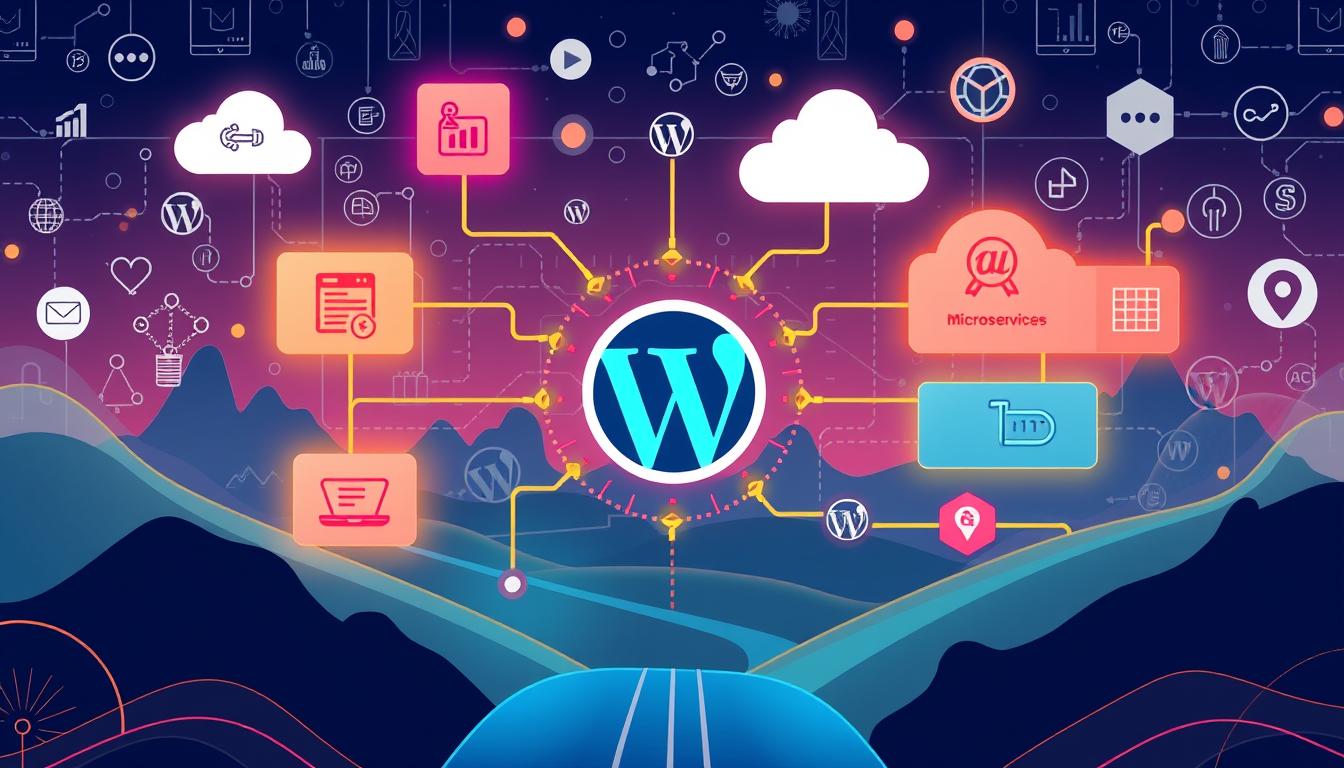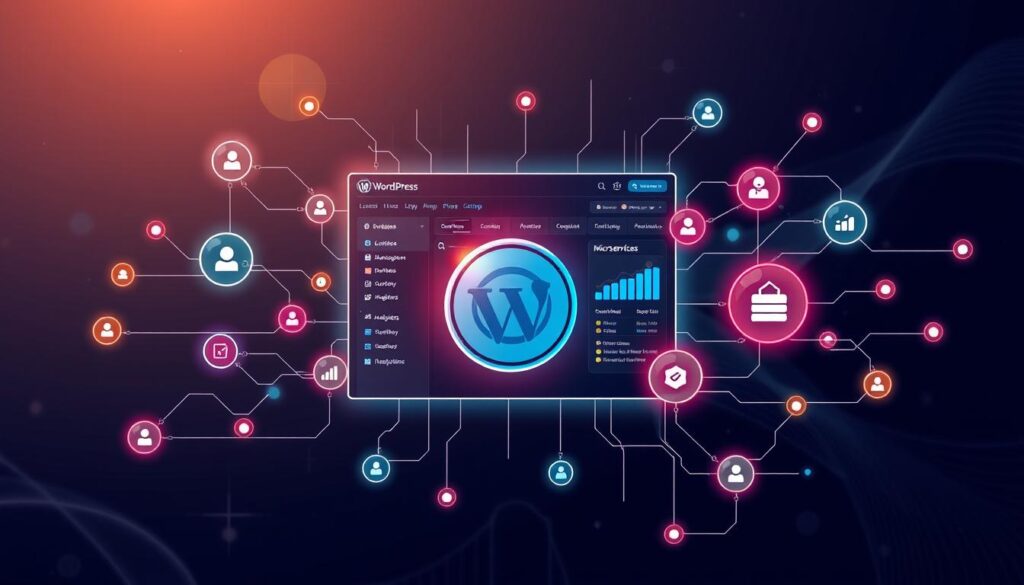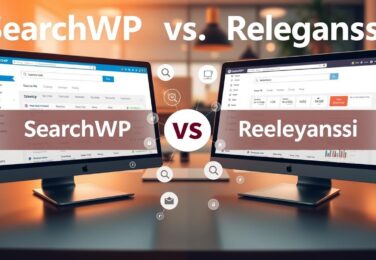Microservices in WordPress: Streamline Your Site

Table of Content
As proud Aussies, we know our websites show off our unique Aussie style to the world. But sometimes, they can be slow, inflexible, or hard to develop. That’s where microservices come in – the future of WordPress development. Penrith
This article will show you how microservices can change the game for your Australian WordPress site. You’ll learn about better scalability, improved developer experience, and how to separate your site’s front-end and back-end. We’ll dive into the power of this new architecture.
Key Takeaways
- Discover how microservices can boost the scalability and performance of your Australian WordPress site.
- Learn how to leverage the WordPress REST API to build headless WordPress applications and enhance your front-end development.
- Explore the benefits of integrating third-party services with your WordPress site using a microservices approach.
- Understand the transition process from a monolithic WordPress setup to a microservices-based architecture.
- Gain insights into best practices for implementing microservices in WordPress, including security considerations and maintenance strategies.
Microservices Architecture: The Future of WordPress Development
Microservices architecture is changing how we build WordPress sites. It brings big gains in scalability and performance. By splitting our WordPress app into smaller services, we make it easier to handle lots of traffic and heavy tasks.
Scalability and Performance Gains
With microservices, we can scale parts of our WordPress site on their own. If one feature gets a lot of traffic, we can just scale that up. This doesn’t slow down the rest of the site. It means better performance and a smooth experience for users, even when lots of people visit.
Improved Developer Experience
Microservices make it easier for developers to work on our WordPress site. They can focus on their part without worrying about the whole codebase. This leads to quicker updates and more efficient work. It’s great for adding wordpress plugins for microservices, wordpress with react, or wordpress with vue.js.
By using microservices, we’re getting ready for the future of WordPress development. This approach brings more scalability, better performance, and makes developers more agile. It’s making WordPress more flexible, strong, and open to new ideas.
Understanding the Monolithic WordPress Approach
To get the most from microservices in WordPress, we need to know the traditional WordPress architecture. In this setup, everything – the front-end, back-end, and database – works together as one unit.
This method is simple and easy to manage at first. But as our site gets bigger, it can become hard to keep up. The monolithic structure might lead to slow performance, limits in growth, and trouble with updates or changes.
That’s where microservices come in. By splitting the app into smaller, independent parts, we gain more flexibility and scalability. This approach also boosts developer productivity. Let’s see how microservices can change our WordPress projects for the better.
Microservices in WordPress: Streamline Your Site
Decoupling the Front-end and Back-end
Using microservices in WordPress can make your website run smoother. It lets you separate the front-end and back-end parts of your site. This way, you can make changes to each part without affecting the other.
This approach means your website’s user interface and the part that handles content can grow and change at different rates. It gives you more control and helps you meet new market needs.
The WordPress REST API is key in this setup. It helps the front-end and back-end talk to each other smoothly. With the WordPress REST API, your WordPress site can work with many devices and platforms, like mobile apps and single-page applications (SPAs).
By separating the front-end and back-end, you can use WordPress as a headless CMS. This means WordPress manages the content, while you use modern tools like React, Vue.js, or Angular for the user interface. This setup boosts performance, makes development easier, and lets you customize the user experience more.
| Benefit | Description |
|---|---|
| Flexibility | Decouple the front-end and back-end, allowing independent evolution and adaptation to changing requirements. |
| Modularity | Build your website as a collection of smaller, interconnected microservices, improving scalability and maintenance. |
| Performance | Optimise the front-end and back-end components individually, resulting in faster load times and enhanced user experience. |
Adopting microservices in WordPress can make your site easier to develop and run faster. It also sets your business up for success in the ever-changing online world.
Leveraging the WordPress REST API
The WordPress REST API is a key tool for integrating microservices into our digital world. It lets us build “headless” WordPress apps. This means the front-end and back-end work together less, but still share WordPress’s strong content management.
This approach lets us use our favourite front-end frameworks like React or Vue.js. At the same time, we keep the benefits of WordPress’s content management.
Building Headless WordPress Applications
The WordPress REST API makes it easy to separate the front-end from the back-end. This opens up new possibilities. We can make apps that are highly customised and fast, using the latest web technologies.
Using WordPress as a headless CMS, we can add microservices to our WordPress setup easily. This makes our apps more functional and user-friendly. It also makes building and improving our apps faster.
| Advantages of Headless WordPress | Advantages of Traditional WordPress |
|---|---|
|
|
The WordPress REST API and “headless” WordPress apps are key to creating new, custom, and fast digital experiences. They let us add microservices to our WordPress setup easily.
“By leveraging the WordPress REST API, we can unlock a new era of personalised and performant digital experiences, seamlessly integrating microservices into our WordPress ecosystem.”
Integrating Third-Party Services with WordPress
Exploring microservices in WordPress shows how it changes the game for adding third-party services and tools. By breaking WordPress into smaller parts, we can add services like payment gateways, analytics, or e-commerce easily. This doesn’t mess with the main parts of our site.
Using a microservices architecture for WordPress lets us add many third-party services smoothly. This makes our site more scalable and flexible. It also lets us use the top features from these outside platforms.
For example, adding a strong e-commerce solution to our WordPress site is easier with microservices. We can make a special service for e-commerce tasks like managing products and payments. This service works well with our WordPress site without changing the core code.
| Third-Party Service | Benefits of Integration |
|---|---|
| Payment Gateways | Secure payment processing, better customer experience, and more sales. |
| Analytics Platforms | Deep insights for better website performance and marketing. |
| E-commerce Solutions | Strong online shopping, managing stock, and fulfilling orders within WordPress. |
With WordPress plugins for microservices and a scalable WordPress setup, we can do amazing things with third-party services. This boosts our site’s features and keeps it flexible and ready for the future.
“Integrating third-party services with WordPress through a microservices approach is a game-changer. It allows us to tap into a vast ecosystem of best-in-class tools and solutions, all while maintaining the flexibility and scalability of our WordPress application.”
Microservices and WordPress Plugins
In the world of WordPress, microservices are changing how we make our websites better. They let us use WordPress plugins in new ways, making our sites more scalable and flexible.
Enhancing Functionality with Microservices
Before, WordPress plugins were big and had many features all in one. Now, with microservices, we can split these plugins into smaller parts. Each part does just one job or feature.
This way, WordPress users and developers get big benefits. We can update or change parts of a plugin easily without messing up the whole thing. This makes our plugins more scalable and adaptable.
Also, using wordpress plugins for microservices with a scalable wordpress setup lets us boost our site’s functionality. We can make complex tasks simpler and connect with other services easily.
“Microservices have empowered us to take our WordPress plugins to the next level, unlocking new levels of scalability and customisation that were previously unattainable.”
Exploring microservices and WordPress opens up new chances for growth and innovation. By adopting this new way, we can make WordPress sites more efficient, adaptable, and user-friendly. This helps us meet our audience’s needs better.
Next, we’ll look at how microservices work in WordPress, like using the WordPress REST API and connecting with other services. Let’s see how microservices can unlock WordPress’s full potential.
Transitioning to a Microservices Architecture
Moving your WordPress site to a microservices architecture is a big step, but it has big rewards. It’s key to have a good plan for a smooth change to microservices in wordpress and distributed wordpress projects.
First, look at your current WordPress setup and see what parts can become separate microservices. You might split the front-end and back-end, or separate things like user login, managing content, or selling online.
- Look at your WordPress setup and see what can be split into microservices.
- Make a detailed plan for moving to a microservices architecture.
- Use the WordPress REST API to help your microservices talk to WordPress smoothly.
- Start adding new microservices bit by bit, so you don’t mess up the whole system.
- Make sure your microservices can grow, work well, and be easy to keep up with, using the benefits of a spread-out system.
Going to a microservices in wordpress and distributed wordpress setup has its tough parts, but with the right plan and action, you can open up new chances for your WordPress site or app.
“The key to successful microservices migration is to take a measured, step-by-step approach that prioritizes scalability, flexibility, and long-term sustainability.”

With a microservices approach, you can make your WordPress setup more flexible, strong, and ready for the future. This helps your developers, makes users happy, and sets your business up for more growth and success.
Best Practices for Microservices in WordPress
When we use microservices in our WordPress sites, it’s key to follow best practices. This ensures our sites are secure, stable, and will do well over time. We’ll look at important things like keeping our microservices safe, using strong monitoring and logging, and keeping our WordPress infrastructure in good shape.
Security Considerations
Keeping our microservices safe is very important when we move to a distributed WordPress setup. We need to use strong checks to make sure only the right people can get to our data and APIs. Microservices in WordPress need a strong security plan. This includes SSL/TLS encryption, managing API keys, and doing regular security checks.
Monitoring and Maintenance
For a distributed WordPress setup, we need good monitoring and logging. We should use central logging and monitoring tools to keep an eye on our microservices. This helps us spot and fix problems fast. Also, we must keep our scalable WordPress setup up to date with the latest software and security fixes.
| Best Practice | Description |
|---|---|
| Secure Microservices | Use strong checks to protect data and APIs. This includes things like encryption. |
| Centralized Logging and Monitoring | Use detailed logging and monitoring tools to watch over your microservices. |
| Regular Software Updates | Make sure your microservices in WordPress, plugins, and other parts are updated often. This fixes security issues and bugs. |
Following these best practices helps us make microservices in WordPress that are strong, safe, and work really well for our users.
“Using microservices in WordPress can make your site better in many ways. But, we need to be careful with security and upkeep.”
Microservices and Modern Front-end Frameworks
The WordPress world is now embracing microservices, bringing new chances to use modern front-end frameworks like WordPress with React and WordPress with Vue.js. This way, we can use the latest tech to make websites that work well and look great for users in Australia.
By splitting the front-end and back-end, we use the best of WordPress and front-end frameworks. WordPress with React makes websites fast and interactive. WordPress with Vue.js uses components for easy web development. Together, they help us make websites that grab and keep our audience’s attention.
This mix of tech makes building websites better for developers. With microservices, teams can work on their own parts easily. This leads to more innovation, faster work, and keeps our WordPress sites modern and effective.
“Microservices in WordPress unlock a new era of front-end possibilities, enabling us to craft user experiences that truly stand out in the Australian market.”
Looking at microservices and modern front-end frameworks, the future of WordPress is exciting. By using this combo, we can make websites that look amazing, work fast, and grow with our audience’s needs in Australia.

Conclusion
We’ve looked into how microservices in WordPress can change the game. By using this new WordPress architecture, Australian businesses can get much better performance and scalability online.
By separating the front-end and back-end, and adding in third-party services, microservices help WordPress developers. They can make their projects more flexible and distributed WordPress solutions. This makes things better for your team and your website visitors.
If you’re starting with microservices in WordPress, the team at Defyn is ready to help. Just email hello@defyn.com.au with questions or to get help making your WordPress site work for you. We’re here to help you use WordPress architecture to its fullest. Let’s make your business grow with scalable WordPress solutions.










